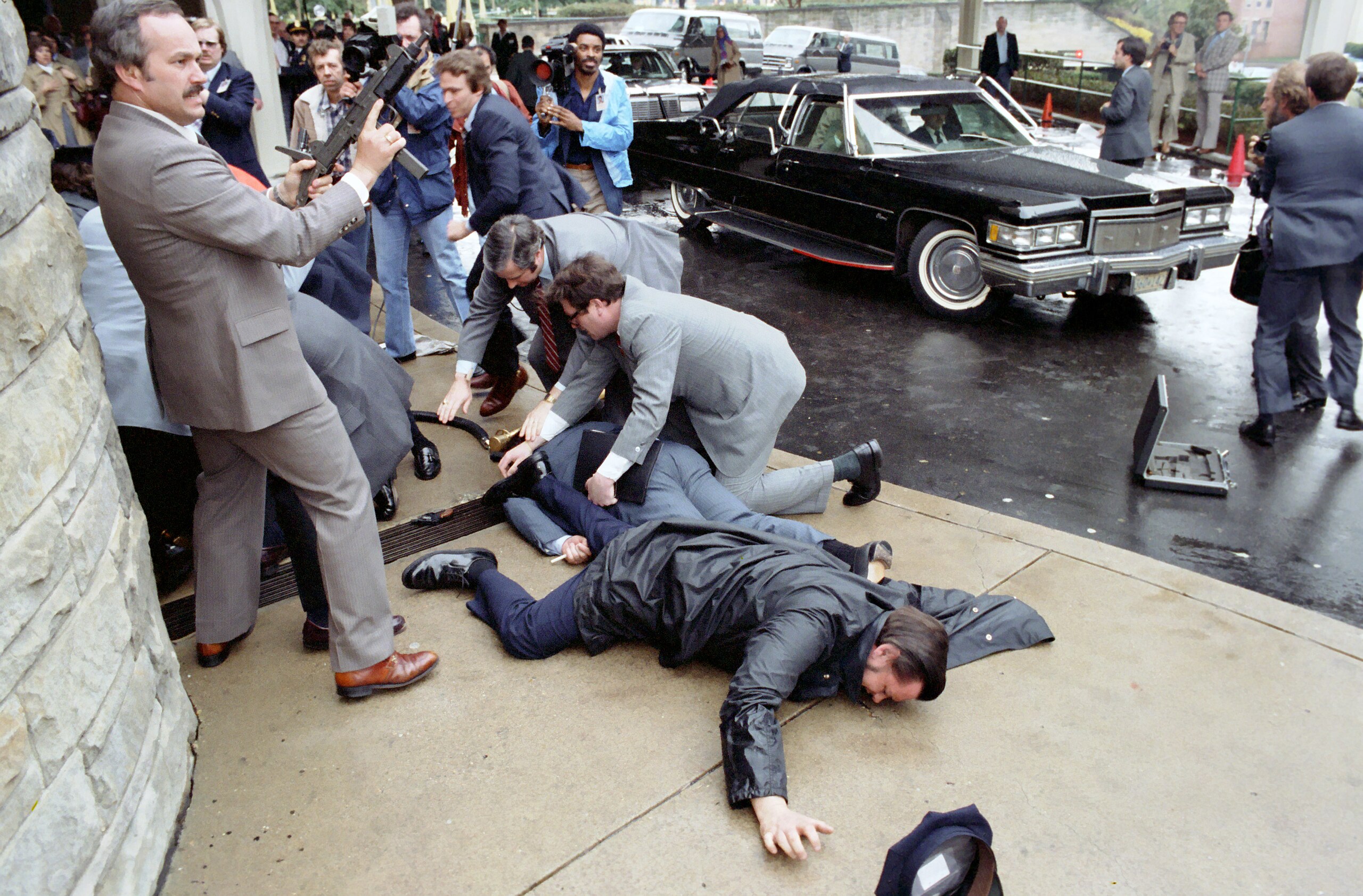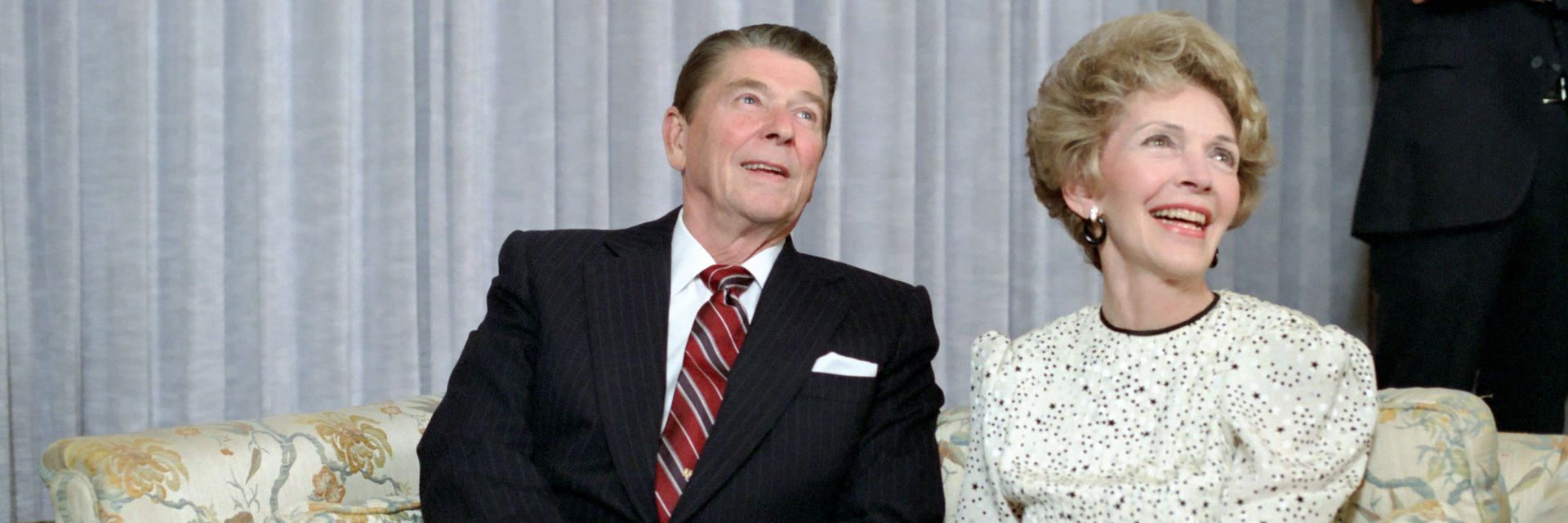More than 40 years ago, U.S. Secret Service agents demonstrated exemplary courage and effectiveness by thwarting the attempted assassination of an American president.
◊
On March 30, 1981, President Ronald Reagan delivered a luncheon address to thousands of representatives from the American Federation of Labor and Congress of Industrial Organizations (AFL-CIO). Not only did the Hilton Hotel at which he spoke have a reputation as one of the safest places in Washington D.C., but the Secret Service had inspected it many times for presidential visits.
Look back at the decisive moments of Ronald Reagan's presidency in this incisive MagellanTV documentary.
A Gunman Unleashes Chaos
Reagan hadn’t finished his first 100 days of office when this routine engagement took a shocking turn. As he and his team filed out of the hotel toward the presidential limousine, a young man named John Hinckley, Jr. clumsily fired six explosive “Devastator” rounds from a .22-caliber revolver.
One bullet struck Press Secretary James Brady near his left eye, permanently disabling him. Another two hit police officer Thomas Delahanty in the neck and Secret Service Agent Tim McCarthy in the stomach, the latter of whom was shielding the president with his own body. The final two shots didn’t hit anything apart from the limousine and a window. It appeared that the president was unharmed.
Well-trained and experienced Secret Service agents quickly seized control of the situation. Agents Jerry Parr and Ray Shaddick shoved Reagan into the limousine, while Agent Dennis McCarthy managed to chase down the attacker and tackle him to the ground.
Investigations Begin after Reagan’s Quick Recovery
On the way back to the White House, Reagan began to cough up blood, which suggested an alarming wound. Indeed, a bullet had ricocheted off the limousine to hit him under his left armpit, breaking a rib and narrowly missing his heart.
The agents rushed the President to George Washington University Hospital, where doctors would promptly wheel him into the operating room on a gurney. Despite the inherent difficulty of removing the many pieces of an explosive bullet, Reagan was in good shape for a 70-year-old, and the surgery was successful.
After convalescing in a hospital for 12 days, Reagan returned to the White House to adjust and make sense of what had happened. At first, involvement by the Soviet Union was thought possible due to ongoing Cold War tensions. The U.S. military monitored the movement of nearby Russian submarines to ensure that Hinckley’s attack wasn’t part of a larger plan.
Further scrutiny confirmed that Hinckley was working alone. He'd wanted to emulate Travis Bickle, Robert DeNiro’s fictional character in the movie Taxi Driver, to earn the romantic interest of DeNiro’s costar, Jodi Foster. Not only was Hinckley’s reasoning deluded, but he actually pleaded insanity in court. The jury found Hinckley not guilty by reason of mental illness, and he’d spend most of the next few decades at St. Elizabeth’s Hospital in D.C.
Hinckley was released conditionally from the mental hospital in 2016, and he was released without any supervision in 2022. From 2016 to 2022, he was required to live with his nonagenarian mother.
 Secret Service agents aid the wounded immediately after President Reagan was shot (Credit: U.S. National Archives, via Wikimedia Commons)
Secret Service agents aid the wounded immediately after President Reagan was shot (Credit: U.S. National Archives, via Wikimedia Commons)
The Secret Service Proved Its Mettle
Reagan had taken office during a turbulent time. Not only was the Cold War between the U.S. and the Soviet Union still very much active, but the president was moving the country in an unabashedly conservative direction during the early days of his first term.
Reagan’s many political opponents made keeping him safe a top priority. Secret Service agents executed their jobs perfectly that day, demonstrating valiant heroism in shielding the president and getting him to the hospital. Without their quick thinking, a national tragedy might have ensued.
Ω
Title Image: President Ronald Reagan and his wife, Nancy Reagan (Source: U.S. National Archives)


